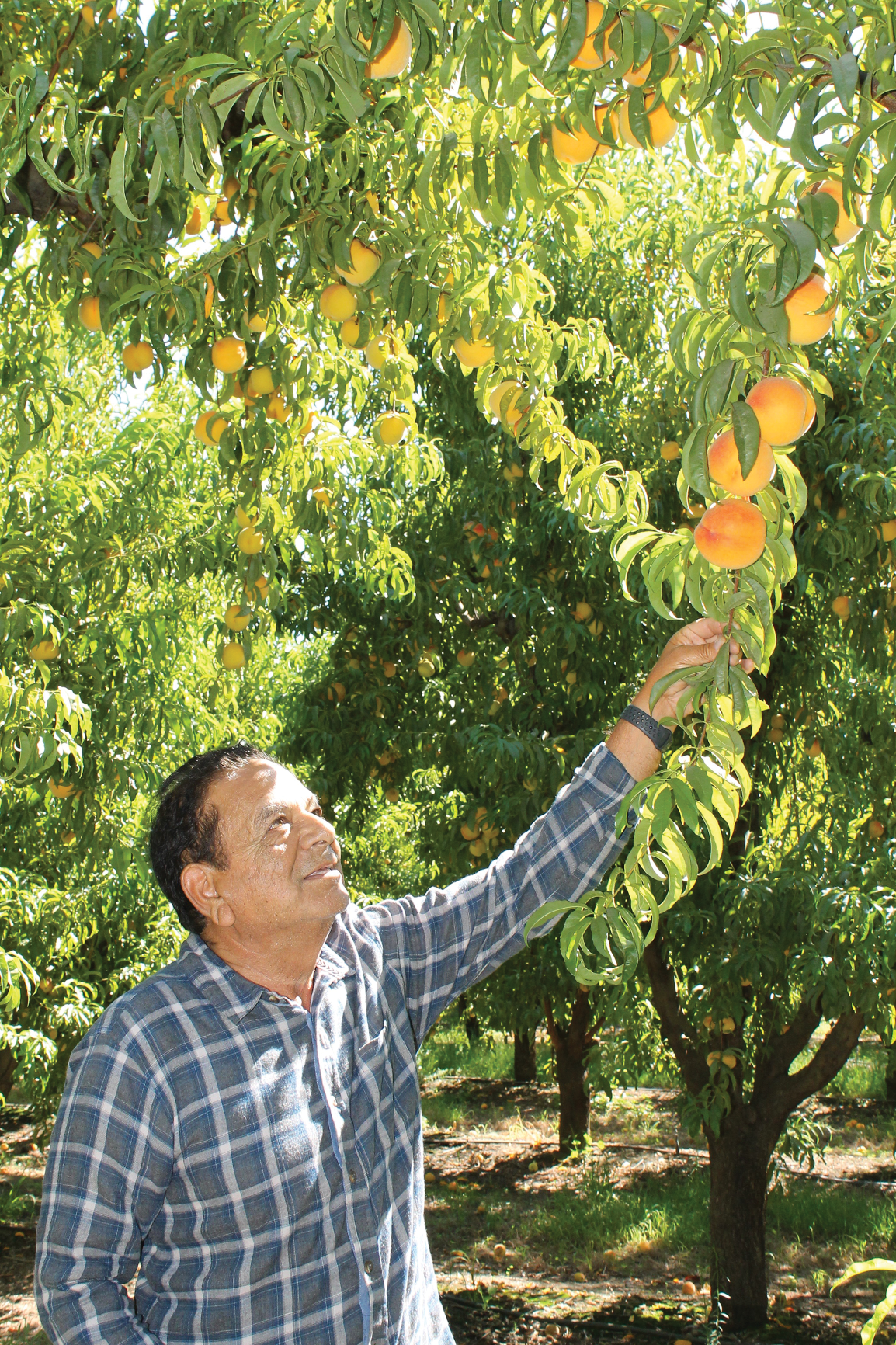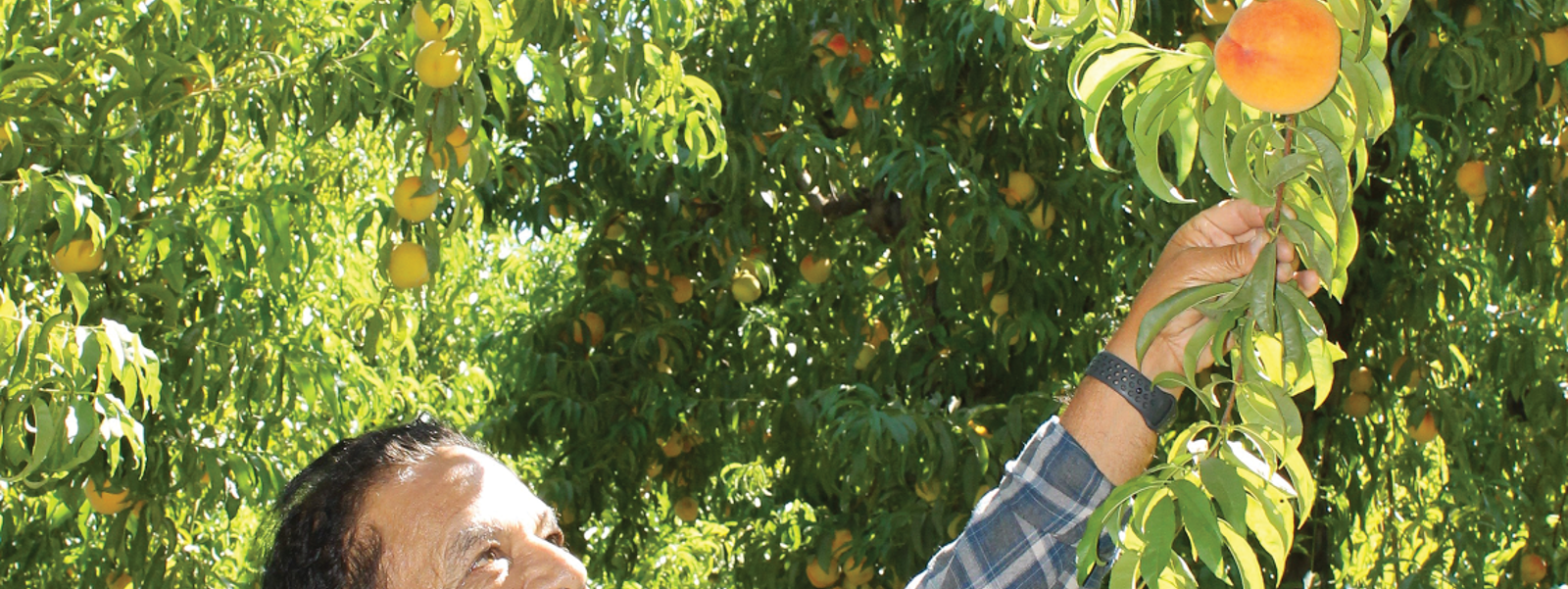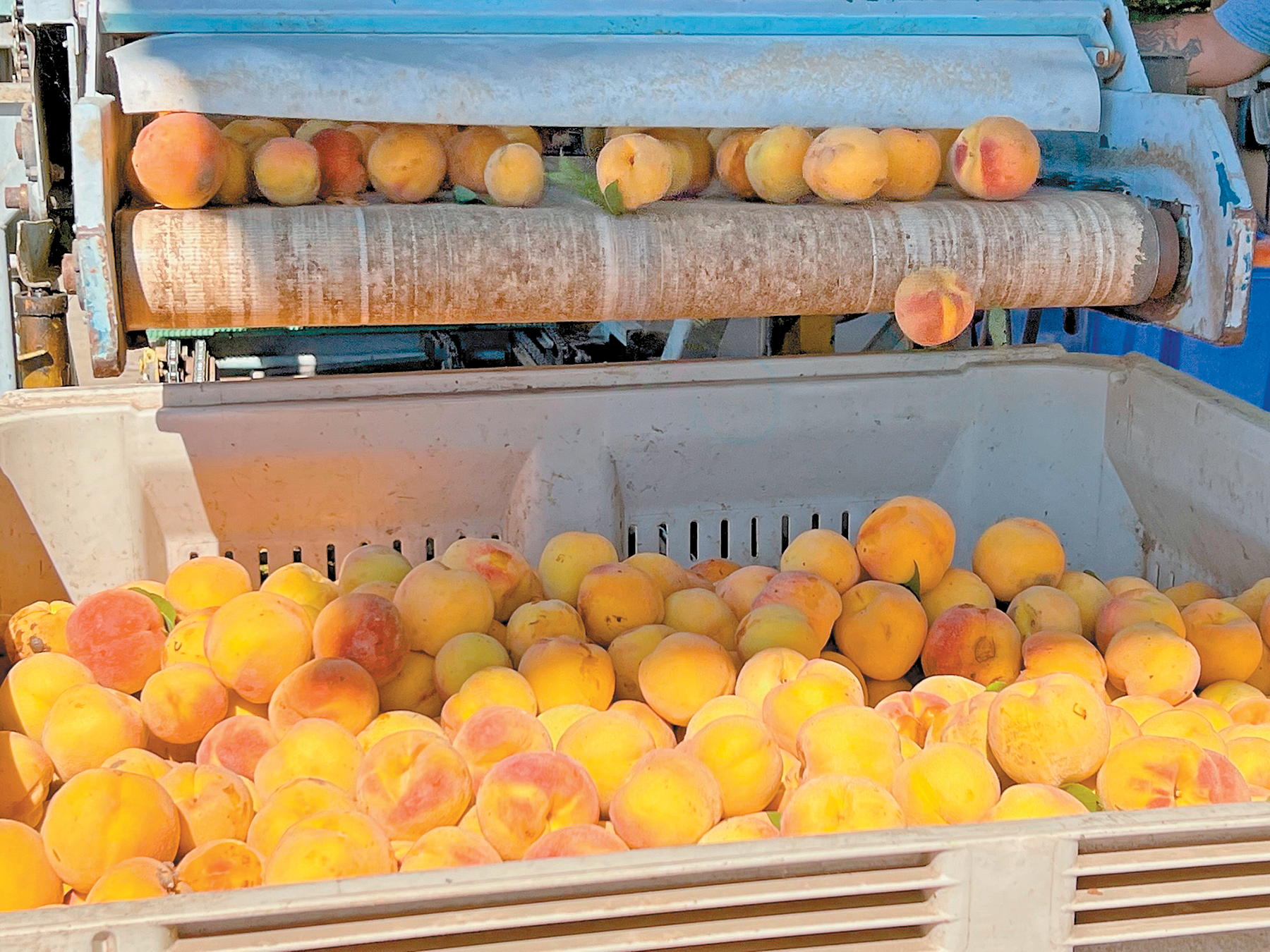Canning, fresh peach crops increase from last year

Sarb Johl of Johl Family Farms in Yuba County says growers need to manage their expectations in a smaller canning-peach sector.
Photo/Robyn Rominger


Photo/Robyn Rominger
By Robyn Rominger
Harvest continues for the state’s cling peaches for canning and freestone peaches for the fresh market, with estimates of good crops that will exceed last year’s production despite weather-related delays.
“Harvest is going well,” said Sarb Johl, who grows cling peaches in Yuba County. “It’s an average crop, not a big crop. We had a lot of wet weather during the bloom period and we expected that the crop was going to be light. We had real light thinning this year.”
Johl described fruit quality as good, “with off-grades being average.”
Rich Hudgins, president and chief executive officer of the Sacramento-based California Canning Peach Association, said this year’s harvest will likely exceed the preseason estimate of 212,000 tons. That’s up from 204,440 tons in 2022.
“Barring some kind of crop disaster in the next two weeks, we’re going to go over that estimate,” Hudgins said in late August, with 75% of the crop harvested.
Johl, who serves as chairman of the California Cling Peach Board, said California had a much bigger canning industry in the early 2000s. He said “the industry is one-third of what it used to be,” due largely to cheaper imports from countries including China, Greece and Chile.
That, in turn, has led to industry consolidation. Today, only two major peach-canning processors remain in the state—Del Monte and Pacific Coast Producers—which account for “99% of the processing peaches,” Johl said.
Additional processors of California canning peaches include Tree Top Inc., which produces baby food in its Medford, Oregon, processing plant, and Clovis-based Wawona Frozen Foods.
“Growers don’t really grow (cling) peaches unless they have a contract,” Johl said. “There aren’t a lot of places for them to go.”
The growing region for cling peaches extends from Yuba County in the north to Fresno County in the south.
This year, harvest was pushed back because the wet, cool weather delayed bloom.
Johl said harvest season, which normally runs 50 days, is expected to last through Labor Day. He said the season “usually starts on the Fourth of July, but this year it started 10 to 12 days later, due to the extended winter. ”
Most of the fruit is harvested by hand, and the remainder is mechanically harvested. Then it is shipped to a receiving station, where it is graded for quality.
Johl noted that California peaches are harvested at peak ripeness and put in a can or jar within a matter of hours, which preserves the freshness and nutritional value of the fruit.
“It’s quick—that’s how you preserve the antioxidants and other nutrients,” said Johl, who owns peach receiving stations in Yuba and Sutter counties. “That’s why we think it’s a good deal for customers.”
Given the supply and demand for canned peaches, Hudgins said, “I’m convinced that our industry is in the best overall position that it has been in for many years.
“With customer demands currently exceeding our 2022 production, our canners are making a reasonable profit in the marketplace while peach growers received a fair price for the 2022 crop,” Hudgins said. “The laws of supply and demand were definitely working in the industry’s favor this year.”
Hudgins stressed the need for growers to secure contracts with peach processors to keep supply and demand in balance. With a record number of walnut orchards removed during the past year, he said the association is concerned that some growers may be interested in converting more acreage to cling peaches.
He stressed that any grower considering a move from walnuts to peaches should be aware of the risks involved with speculative plantings. Although Del Monte and Pacific Coast Producers both contracted for a significantly higher number of 2023 plantings, Hudgins cautioned that California’s cling peach sector cannot sustain more new plantings in future years without returning to an oversupply position.
“Simply put, do not plant a cling peach orchard without a letter of intent from a processor,” he said, emphasizing that any grower who pursues a speculative strategy “is making a big bet with worse odds than any casino offers to gamblers.”
Other challenges that peach growers face include high input costs for fuel, fertilizer and crop-protection tools, labor shortages and regulatory issues, such as the state’s Sustainable Groundwater Management Act that requires irrigators to balance groundwater supplies, forcing many farmers to limit water use.
In fresh-market peaches, the state’s estimated freestone peach production is forecast to be 260,000 tons, up from 240,000 tons in 2022, according to the U.S. Department of Agriculture.
Ian LeMay, president of the Fresno-based California Fresh Fruit Association, said the fresh-market peach harvest goes from May through October, with most of the production in Fresno, Madera and Tulare counties.
“We were fortunate that we had a great winter going into the season with an abundance of precipitation, and both the chill hours and a wet winter tend to lead to a strong fruit set, which we had in the spring,” he said. “Our growers went through and prioritized the best stuff we had.”
Summer growing conditions have been favorable, other than a freak storm in mid-August.
LeMay said the association is “assessing what potential damage might have occurred with the unseasonable rains” due to Tropical Storm Hilary. But he said, “Our expectations are good going forward through the season.”
The California season progresses as farmers in Georgia lost 90% of their peach crop due to a heat wave in February followed by two damaging frosts. Some wholesale buyers instead sourced their peaches from California.
“As California growers, we feel for our friends and brothers in the Southeast for the crop loss they sustained earlier this year, mostly due to unseasonably cold weather in April,” LeMay said. “We have tried to support them the best we can. Every growing season the hope is that they’ll have a good season and a marketable crop next year.”
He noted that California farmers grow 75% of the nation’s fresh-market peaches. “California is your stone fruit state,” he said, “and we’re pretty darn proud of it.”
(Robyn Rominger is a reporter in Winters. She may be contacted at robynrominger.com.)




